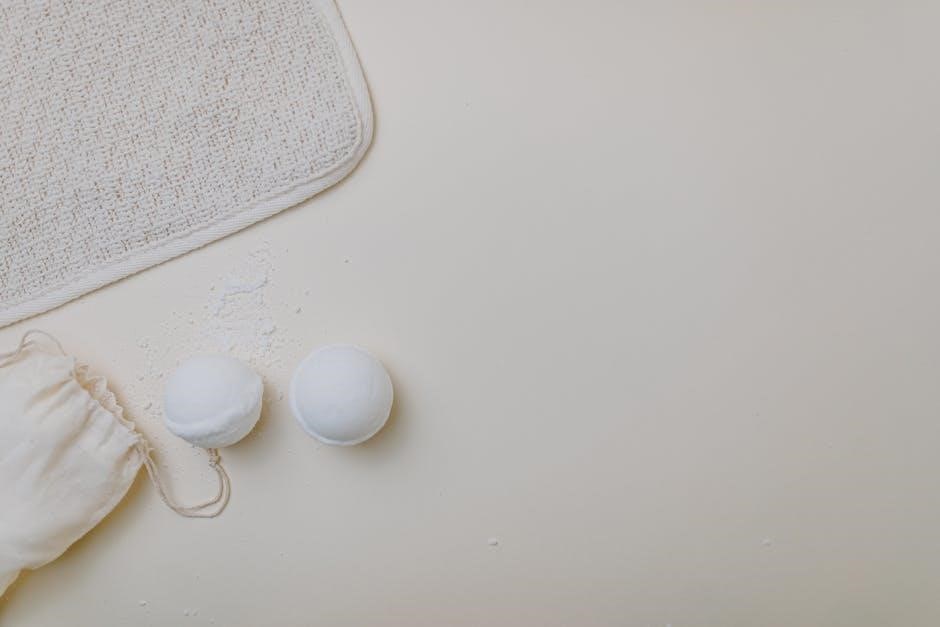The 10-Day Pouch Reset is a structured dietary plan designed to help individuals regain control of their weight loss journey after gastric bypass or sleeve surgery.

Overview of the 10-Day Pouch Reset
The 10-Day Pouch Reset is a short-term dietary intervention designed to help individuals who have undergone gastric bypass or sleeve surgery regain control of their weight loss journey. Created by the Mexico Bariatric Center, this plan focuses on resetting the body’s metabolic set-point through a high-protein, low-calorie diet. Unlike the traditional 8-10 week post-bariatric surgery diet, the pouch reset is condensed into 8-10 days, offering a structured approach to shrink the stomach pouch that may have stretched over time. The plan progresses through stages, starting with clear liquids and gradually introducing protein, soft foods, and nutrient-dense meals. It aims to recharge both the body and mind, helping individuals refocus on healthy eating habits and portion control; While results may vary, the pouch reset is a popular tool for rebooting weight loss efforts post-surgery. Consistency and adherence are key to its success.
Importance of Resetting Your Pouch
Resetting your pouch is crucial for individuals who have undergone gastric bypass or sleeve surgery and are experiencing slowed weight loss or weight regain. Over time, the stomach pouch can stretch, leading to larger portions and less satiety, hindering weight loss efforts. The 10-Day Pouch Reset helps shrink the pouch, reducing its capacity and restoring the restrictive benefits of the surgery. By focusing on high-protein, low-calorie foods and minimizing sugar intake, the reset supports a healthier metabolic state. It also helps individuals break unhealthy eating habits and refocus on nutrient-dense meals, ultimately aiding in sustained weight loss and improved overall health. Regular resets can be a valuable tool for maintaining long-term success post-bariatric surgery. Consistency and commitment are essential for achieving optimal results.

What is a Pouch Reset?
A pouch reset is a short-term dietary intervention designed to reset the stomach pouch after bariatric surgery, promoting weight loss and metabolic balance through structured eating.

Definition and Purpose
A pouch reset is a dietary method aimed at re-establishing a smaller stomach pouch size and improving metabolic function. It helps individuals who have experienced weight regain or pouch stretching after bariatric surgery. The primary purpose is to reignite weight loss by focusing on high-protein, low-calorie meals and portion control. This structured approach helps patients return to healthier eating habits, reducing cravings and improving overall metabolic health. The reset period, typically 10 days, mimics the initial post-surgery diet stages, guiding the body back to a weight loss-friendly state. It’s a non-invasive solution to address common post-bariatric challenges and support long-term weight management goals effectively.
How it Differs from a Normal Post-Gastric Bypass Diet
The 10-Day Pouch Reset differs from a standard post-gastric bypass diet in duration and intensity. While a typical post-surgery diet lasts 8-10 weeks with four to five stages, the pouch reset is a condensed, 8-10 day program. It is specifically designed for individuals who have already undergone surgery but may have experienced weight regain or pouch stretching. The reset is more structured and focuses on high-protein, low-calorie meals to quickly reignite weight loss. Unlike the gradual approach of a normal post-bariatric diet, the pouch reset is a short-term intervention to reset habits and metabolic function. It is tailored for those needing to recharge their weight loss journey, emphasizing portion control and nutrient-dense foods to support long-term success.

Benefits of the 10-Day Pouch Reset
The 10-Day Pouch Reset helps recharge your body and mind, resetting your metabolic set-point for enhanced weight loss and improved overall health.
The 10-Day Pouch Reset focuses on recharging both your body and mind, helping you refocus on healthy habits and weight loss goals. By adhering to a high-protein, low-calorie diet, you can reset your metabolism and mental mindset. This structured plan allows your body to heal and recover, reducing cravings and increasing energy levels. Many participants report feeling more motivated and disciplined after completing the reset, which is essential for long-term success. The combination of nutrient-dense foods and portion control helps create a balanced approach to eating, making it easier to maintain a healthy lifestyle beyond the 10 days. This reset is not just about dieting; it’s about reclaiming control over your health and well-being. Resetting your metabolic set-point is a key goal of the 10-Day Pouch Reset, helping your body return to a state of optimal fat burning and energy use. This process involves a high-protein, low-calorie diet that kickstarts your metabolism and reduces reliance on stored fat. By focusing on nutrient-dense foods and eliminating sugar, you allow your body to recover and reset its natural metabolic balance; This reset can lead to improved digestion, increased energy levels, and a stronger foundation for long-term weight loss. The structured plan ensures your body adapts to healthier habits, making it easier to maintain a balanced lifestyle beyond the reset period. This metabolic adjustment is crucial for overcoming weight loss plateaus and achieving sustainable results. The 10-Day Pouch Reset is a short-term, highly structured program designed to reset your diet and metabolism. It follows a clear, day-by-day plan similar to post-bariatric surgery diets but condensed into a 10-day format. The 10-Day Pouch Reset is designed to provide a focused, manageable timeframe for individuals to reset their metabolism and eating habits. This duration is long enough to allow the body to adapt and respond positively but short enough to maintain motivation and compliance. It mirrors the initial stages of post-bariatric surgery diets but is condensed into a shorter period. The 10-day structure helps individuals break unhealthy patterns, recharge their commitment to weight loss, and kickstart their metabolism. This timeframe has been proven effective in helping participants achieve noticeable results and set a foundation for long-term success. The 10-Day Pouch Reset shares many similarities with traditional post-bariatric surgery diets, which typically include stages like clear liquids, protein introduction, and gradual progression to solid foods. Both approaches emphasize a high-protein, low-calorie intake to support weight loss and metabolic health. They also focus on portion control and avoiding non-nutrient-dense foods, such as sugary or high-carbohydrate options; The structured progression through dietary stages is designed to ease the digestive system back into healthy eating habits while minimizing discomfort. These similarities make the pouch reset an effective option for individuals who have undergone gastric bypass or sleeve surgery and need to reignite their weight loss journey. The condensed timeline of the pouch reset mirrors the foundational principles of post-bariatric diets but in a shorter, more accessible format. The 10-Day Pouch Reset Plan is a structured approach progressing from clear liquids to solid foods, focusing on high-protein, low-calorie meals to support weight loss and metabolic reset. Day 1 focuses on a clear liquid diet to ease the digestive system back into a structured eating routine. This includes water, sugar-free non-carbonated drinks like tea or coffee, and clear broths. These liquids provide essential hydration and electrolytes without overwhelming the pouch. Portion sizes are kept small, with a goal of consuming 48 ounces or less per meal. This phase helps reset the stomach pouch, promoting a gradual return to mindful eating and portion control. It’s crucial to avoid sugary drinks and carbonated beverages to prevent discomfort or bloating. Staying hydrated is key, setting a strong foundation for the days ahead. On Day 2, the focus shifts to introducing protein into your diet, starting with small portions of protein-rich liquids or soft foods. This includes sugar-free protein shakes, clear broths with protein, or non-carbonated beverages like unsweetened almond milk. The goal is to reintroduce nutrients while keeping the digestive system comfortable. Protein helps stabilize blood sugar and supports muscle retention, which is essential during weight loss. Portion sizes remain small, typically no more than 48 ounces per meal, to allow the pouch to adjust gradually. Avoid sugary or carbonated drinks, as they can cause discomfort. This phase emphasizes the importance of lean, high-quality protein sources to kickstart your metabolic reset. Day 3 introduces soft, easily digestible foods to gradually expand your diet while maintaining comfort. Examples include scrambled eggs, mashed vegetables (like avocado or zucchini), and lean meats cooked to a soft texture. Portion sizes remain small, typically 48 ounces or less per meal, to avoid overwhelming the pouch. Avoid sugars and unhealthy fats, focusing instead on nutrient-dense options. This phase helps the body adapt to more solid textures while keeping calorie intake low. It’s important to chew thoroughly and avoid carbonated or sugary beverages, which can cause discomfort. Soft foods are a stepping stone toward reintroducing more variety in the following days. On Day 4, you transition to pureed foods to continue advancing your diet while maintaining a gentle approach on your pouch. Pureed foods like blended vegetables (e.g., cauliflower or carrots), lean proteins (e.g., chicken or turkey), and even some low-sugar fruits (e.g., berries) are introduced. These foods should be smooth in texture and free of chunks to avoid discomfort. Portion sizes remain controlled, typically around 48 ounces per meal, to prevent overeating. The focus is on high-protein, low-calorie options to support weight loss and metabolic reset. Avoid adding sugars or unhealthy fats to your purees. This phase helps your body adapt to more complex textures while keeping your calorie intake in check. Stick to nutrient-dense choices to maximize benefits during this critical reset period. By Day 5 of the 10-Day Pouch Reset, you’ll introduce soft, solid foods into your diet. These should be easy to chew and gentle on your pouch, such as scrambled eggs, soft-cooked chicken, or ground meats. Vegetables like mashed potatoes, steamed green beans, or roasted squash (mashed) are also appropriate. Protein-rich foods remain a priority to help stabilize blood sugar and reduce hunger. Portion sizes should still be small, around 48 ounces per meal, to avoid overeating. Focus on nutrient-dense, low-calorie options and avoid sugars or non-nutrient-dense foods. This phase helps your body adapt to more substantial textures while maintaining the reset’s goals of weight loss and metabolic balance. On Day 6 of the 10-Day Pouch Reset, the focus shifts to incorporating high-protein foods to support muscle retention and reduce hunger. Meals should center around lean proteins like grilled chicken, turkey, or fish, portioned at 4-6 ounces per serving. Eggs, tofu, or Greek yogurt are also excellent options. Pair these proteins with low-calorie, nutrient-dense vegetables such as spinach, broccoli, or asparagus to keep meals balanced. Avoid sauces or seasonings high in sugar or unhealthy fats. Staying hydrated is crucial, so drink plenty of water throughout the day. This phase helps reignite your metabolism and reinforces healthy eating habits, aligning with the reset’s goal of jumpstarting weight loss and improving overall health. Day 7 of the 10-Day Pouch Reset emphasizes low-calorie meals to further accelerate weight loss and metabolic reset. Focus on lean proteins like chicken, turkey, or fish, portioned at 4-6 ounces, paired with low-calorie vegetables such as leafy greens, cucumbers, or bell peppers. Incorporate small portions of whole grains like quinoa or brown rice for fiber and satiety. Avoid added fats or sugars, and opt for herbal teas or water to stay hydrated. This phase aims to maintain momentum while teaching portion control and mindful eating habits. By keeping meals simple and nutrient-dense, you support your body’s transition toward a healthier metabolic state, aligning with the pouch reset’s goals of renewed weight loss and improved overall health. Day 8 focuses on incorporating nutrient-dense foods to replenish vital vitamins, minerals, and antioxidants. Prioritize leafy greens like spinach, kale, and broccoli, along with colorful vegetables such as bell peppers and carrots. Include lean proteins like grilled chicken, fish, or tofu, and add healthy fats like avocado or nuts in small portions. Berries, citrus fruits, and apples are excellent low-calorie, high-fiber options. Meals should be balanced, with portion sizes controlled to avoid overeating. Hydration remains key, so drink plenty of water throughout the day. This phase emphasizes nourishing your body while maintaining the momentum of your weight loss journey, helping your metabolism function optimally. Snacks like hard-boiled eggs or a handful of almonds can satisfy cravings without derailing progress. Day 9 emphasizes the importance of portion control to maintain progress and prevent overeating. Meals should be measured to ensure they align with your pouch’s capacity, typically 1/2 to 1 cup per meal. Focus on high-protein, low-calorie foods while keeping carbohydrates and sugars minimal. Practice mindful eating by eliminating distractions during meals and savoring each bite slowly. Avoid second helpings and opt for water or sugar-free beverages between meals to stay hydrated. Snacks, if needed, should be small and nutrient-dense, such as hard-boiled eggs or a handful of raw almonds. This phase teaches sustainable habits to maintain weight loss beyond the reset, helping you develop long-term discipline and healthier eating patterns. Day 10 marks the transition to long-term maintenance, focusing on sustainable habits to preserve weight loss and pouch health. Continue prioritizing high-protein, nutrient-dense meals while avoiding sugary and high-calorie foods. Monitor your progress weekly to ensure you’re meeting your goals and adjust portions or food choices as needed. Stay hydrated by drinking plenty of water throughout the day. Incorporate regular physical activity, such as walking or light exercise, to support metabolism and overall health. Plan balanced meals in advance to avoid impulsive choices and keep track of your intake to maintain accountability. Building a strong support system, such as joining weight loss groups or consulting with a nutritionist, can also help you stay on track. Consistency is key to maintaining the benefits of the reset and achieving lasting success. Emphasize high-protein, low-calorie meals to maintain pouch health and avoid sugary, non-nutrient-dense foods that can hinder weight loss progress and stretch the pouch. A high-protein, low-calorie diet is crucial during the 10-Day Pouch Reset as it helps maintain muscle mass while promoting fat loss. Protein keeps you full longer, reducing hunger and cravings for unhealthy snacks. It also supports the healing and integrity of the gastric pouch, preventing stretching. Low-calorie intake accelerates weight loss by creating a calorie deficit, essential for resetting your metabolic set-point. This combination ensures sustainable progress without compromising nutritional needs, making it a cornerstone of the pouch reset regimen. Avoiding sugar and non-nutrient dense foods is vital during the 10-Day Pouch Reset. These foods can hinder weight loss by spiking blood sugar levels and increasing cravings for unhealthy options. They provide empty calories, offering little to no nutritional value while expanding the stomach pouch, which can sabotage progress. Focus on whole, nutrient-dense foods like lean proteins, vegetables, and whole grains to support satiety and metabolic health. Eliminating sugary and processed foods helps maintain a healthy pouch size and promotes long-term weight management, ensuring the reset is effective and sustainable; Individuals often inquire about the effectiveness of the 10-Day Pouch Reset, its differences from other plans, and maintaining weight loss post-reset. These questions highlight common concerns and curiosities surrounding the program. The 10-Day Pouch Reset may not yield desired results for everyone due to individual differences in metabolism, adherence, and physiological responses. Some individuals may experience challenges with the strict dietary guidelines, leading to inconsistent weight loss. Additionally, factors such as pre-existing health conditions or hormonal imbalances can influence the effectiveness of the reset. It’s important to consult a healthcare provider before starting the program to ensure it aligns with personal health goals and circumstances. The 5-Day and 10-Day Pouch Reset plans share similar goals but differ in duration and intensity. The 5-Day plan is shorter, focusing on rapid metabolic reset through strict adherence to high-protein, low-calorie meals. It’s often recommended for those needing a quick reboot. In contrast, the 10-Day plan provides a more gradual approach, allowing the body to adjust to dietary changes over a longer period. This extended duration can lead to more sustained weight loss and healthier habits. Both plans emphasize nutrient-dense foods and portion control but cater to different preferences and commitment levels, offering flexibility for individuals seeking to reset their diet post-bariatric surgery. Maintaining weight loss after the 10-Day Pouch Reset requires consistent effort and adherence to healthy habits. Gradually incorporating a balanced diet rich in proteins, vegetables, and whole grains helps sustain results. Portion control is crucial, as overeating can stretch the pouch again. Regular physical activity, such as walking or strength training, supports long-term weight management. Staying hydrated and avoiding sugary, high-calorie foods are also key. Tracking meals and progress can provide accountability and motivation. Consulting with a healthcare provider or nutritionist ensures personalized strategies for ongoing success. By committing to these practices, individuals can maintain their weight loss and enjoy improved overall health. The 10-Day Pouch Reset offers a structured path to renewed weight loss and metabolic balance, helping individuals regain control and achieve lasting results with dedication. The 10-Day Pouch Reset is a transformative approach for individuals seeking to reignite their weight loss journey post-bariatric surgery. By focusing on high-protein, low-calorie meals and eliminating sugary, non-nutrient dense foods, participants can reset their metabolic set-point and shrink their stomach pouch. This structured plan, typically lasting 8-10 days, mirrors the initial stages of a post-gastric bypass diet but accelerates results. Those who commit to the program often experience renewed energy, mental clarity, and a stronger commitment to healthy eating habits. While results may vary, many find the reset instrumental in overcoming weight loss plateaus and maintaining long-term success. Dedication and adherence are key to maximizing its benefits. The 10-Day Pouch Reset PDF guide, created by the Mexico Bariatric Center, is widely available online. You can download it directly from their official website or through various bariatric clinics and weight loss communities. Additionally, it can be found on online marketplaces like Amazon or shared through bariatric support groups. Ensure you obtain the guide from a trusted source to guarantee authenticity. The PDF provides a detailed, structured plan, including meal ideas, portion control tips, and strategies for maintaining weight loss post-reset. Before starting, it’s essential to consult with your healthcare provider or bariatric surgeon to confirm it aligns with your specific needs. This guide is a valuable resource for resetting your pouch and reigniting your weight loss journey.Recharging Your Body and Mind
Resetting Your Metabolic Set-Point

Duration and Structure
Why 10 Days?
Similarities to Post-Bariatric Surgery Diets
Day 1-10 Plan
Day 1: Clear Liquid Diet
Day 3: Soft Foods
Day 4: Pureed Foods
Day 5: Solid Foods

Day 6: High-Protein Focus
Day 7: Low-Calorie Meals
Day 8: Nutrient-Dense Foods
Day 9: Portion Control
Day 10: Maintenance and Beyond

Key Considerations
Importance of High-Protein, Low-Calorie Diet

Avoiding Sugar and Non-Nutrient Dense Foods

Common Questions
Why a Pouch Reset May Not Work for Everyone
Differences Between 5-Day and 10-Day Plans
Maintaining Weight Loss Post-Reset
Final Thoughts on the 10-Day Pouch Reset
Where to Find the 10-Day Pouch Reset PDF Guide





